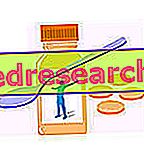By Dr. Marco Siffi
The immune system represents an important defense mechanism for our body, capable of recognizing and destroying invading microorganisms, and contributes to maintaining internal homeostasis . In recent years some research has been conducted on physical activity and the immune response in the athlete, discovering that this combination is not always synonymous with perfect immune efficiency.

2.1 NOTES ON THE IMMUNE SYSTEM
This system is composed of central and peripheral organs; of the central part are the thymus and bone marrow, while the peripheral ones are represented by lymph nodes, spleen, lymphoid cells of blood and lymph. (3) (16) The immune system is organized into two functional structures; the first one is the non-specific recognition , followed by the subsequent phagocytosis and destruction by polymorphonuclear cells , macrophages and " natural killer " (NK) lymphocytes, which are able to detect anomalies in the membranes and participate in the destruction of tumor cells or virus-infected cells . The second phase is represented by the specific recognition of the antigen and is carried out by the T and B lymphocytes. The T series lymphocytes, following contact with the antigen, replicate and differentiate into effector or regulatory T cells (T helper and T suppressor ), distinct due to the possession of specific receptors CD4 and CD8 and responsible for cellular immunity. The lymphocytes of the B series differ instead in the plasma cells that produce antibodies and are responsible for the humoral immunity. (1) The activation of the two systems is triggered by the antigen-cell coupling, by the intercellular one and by the intervention of some polypeptides known as cytokines, lymphokines, monochines, interleukins, as shown in (figure 2.1). These substances have the ability to act on receptors of target cells. The activation of the T and B complex involves the uptake and processing of the antigen, in harmony with histocompatibility molecules (HLA-DR), by macrophages and other cells. These elements process and release interleukin 1 (IL-1) which, in turn, causes the "T helper" cells (CD4 +) to produce interleukin 2 (IL-2). This second cytokine promotes and regulates the replication of antigen-specific and helper effector cells. Other elements that can determine the growth, the differentiation and the specific activity of the T and B lymphocytes in the various stages of their development, are the interferon and the interleukins-4, -5 and 6 and the so-called Tumor necrosis factor (TNF ). Other factors among which, that which activates macrophages and IL-1, recall and activate the elements of aspecific defense. The production of IL-1, TNF and IL-6 is simultaneous, following the stimulation by a variety of infectious and non-infectious agents. It should also be noted that the targets of these cytokines are not only the cells belonging to the immune system, but also others belonging to different organs and systems. Thus, IL-1 is able to adhere to endothelial cells and fibroblasts, promotes bone resorption and cartilage destruction, stimulates the replication of epithelial, synovial and endothelial cells and fibroblasts; instead it has a catabolic effect on muscle cells and causes the death of some cell lines, induces the production of prostaglandins and the synthesis of enzymes in humans, and partly promotes the acute phase response by hepatocytes, the ACTH and the fever; like TNF it induces the production of IL-6, TNF, whose name expresses the ability to destroy some tumors obliterating the vessels or directly attacking the cells, acts in practice on the same IL-1 target cells on which it exerts the same effect or acts synergistically. Furthermore, it is a potent IL-1 inducer in macrophages and endothelial cells. Of all the cytokines, TNF is the one with the strongest pro-inflammatory power, while the part performed in the specific immune response is much more modest. Finally, IL-6 exercises an activity of IL-1 and TNF. Its effects are particularly marked on the liver and on the CNS and very minor on the specific immunity system. It can be stated that the main activities of IL-6 are more conservative than pro-inflammatory. (1) (34) (18)

Fig. 2.1 In A, the mechanism of cell-mediated immunity characterized by the exposure, on the macrophage membrane, of the type II histocompatibility complex (MHC) is schematically represented. In B, on the other hand, the mechanism of cell-mediated immunity is shown, characterized by the exposure, on the membrane of cells infected by a virus, of type I MHC. Finally, the mechanism of antibody-mediated immunity, characterized by activity of B lymphocytes (from Physiology of man, Edi-ermes, Milan, 2005).
The activation of B cells causes their transformation into plasma cells which, in turn, are stimulated to produce immunoglobulins . These can be dosed into serum and other organic liquids (eg saliva) and are divided into 5 classes:
- the immunoglobulins G (IgG), are the most numerous and able to neutralize many viruses, bacteria and toxins;
- immunoglobulins E (IgE), release substances capable of accelerating local inflammation;
- the immunoglobulins D (IgD) present on the surface of the B lymphocytes capable of binding antigenic molecules;
- the immunoglobulins M (IgM), the first to be secreted upon arrival of the antigen responsible for agglutination;
- immunoglobulins A (IgA) present in glandular secretions, adhere to mucous membranes and attack pathogens before they enter tissues.
When immunoglobulin molecules acquire the capacity for specific reaction, they are referred to as antibodies . These protect the host by agglutinating the micro-organisms, favoring phagocytosis, activating the complement, producing opsonins and neutralizing bacterial toxins. (13)



